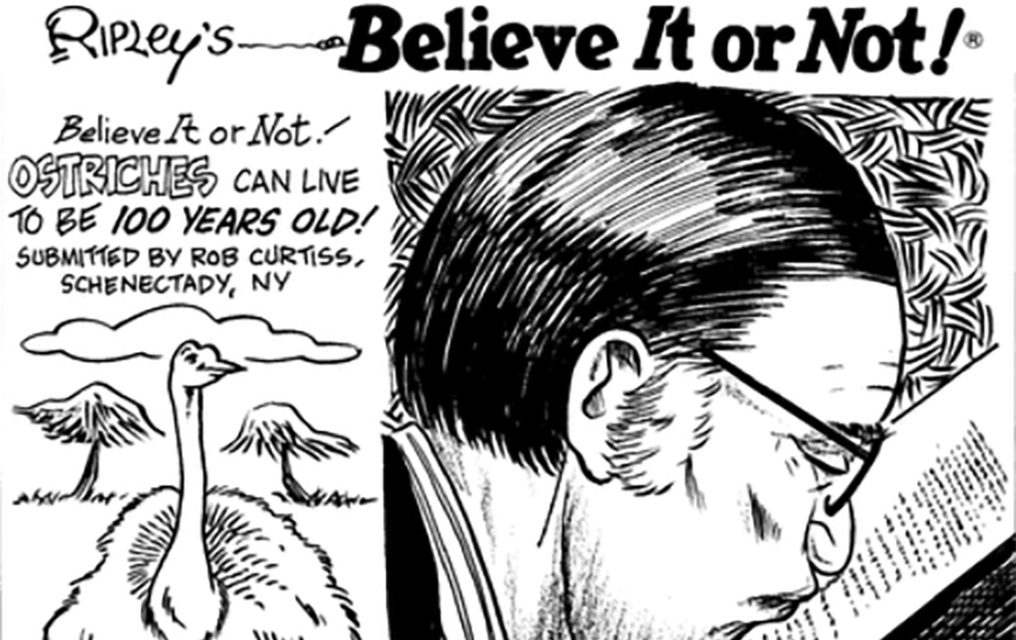Ripley's Believe It or Not by Ripley’s Believe It or Not! for August 04, 2014
Transcript:
Malavath Purna, 13, of Andhea Pradesh, India, became the youngest female to climb Mount Everest when she reached the summit on May 26, 2014. Riders in the 2014 Tour de France climbed heights equivalent to ascending Mount Everest, Kilimanjaro, McKinley, and Mont Blanc- twice! A pair of pants discovered in a cemetery in Xinjiang, China, may be the earliest ever found, thought to have been worn by a horseman 3000 years ago.






Templo S.U.D. over 10 years ago
Why am I not surprised about the Chinese trousers?
BRI-NO-MITE!! Premium Member over 10 years ago
Miss Purna may also be the first person born in this century to climb Mt Everest.
Space_cat over 10 years ago
I’ll bet those pants are in better shape that the trendy ones the teenagers wear!
Charlie Fogwhistle over 10 years ago
The Tour de France riders didn’t have to deal with the lack of atmosphere found at Mr. Everest, however. Use a stair-stepper long enough and you can make the same claim.
Simon_Jester over 10 years ago
Considering what happened on Everest only a month earlier than when Malavathy Purna reached the summit, she’s lucky she was allowed to even TRY making her ascent
francisrossi over 10 years ago
Given there’s about four years missing from the calendar, I don’t think a single year really matters.
SKJAM! Premium Member over 10 years ago
Regular readers of this strip probably already know this, but there’s a new biography of Robert L. Ripley, the creator of “Believe It or Not” out. It s “A Curious Man” by Neal Thompson, and I wrote a review of it here: http://www.skjam.com/2014/07/27/book-review-a-curious-man/
potrerokid over 10 years ago
You get an “F”!!!!!!!
sdjamieson Premium Member over 10 years ago
So she was the youngest girl to ride a bike up Mount Everest in the world’s oldest pants? I’m confused. I know these are all supposed to fit together somehow!
Jogger2 over 10 years ago
Sure there was no “year zero.” But most people do observe a decade from a year ending in zero to a year ending in nine. For example, “the eighties” would be from 1980 to 1989, not 1981 to 1990. “The sixties” would be from 1960 to 1969, not 1961 to 1970. So, to be consistent, the twenty-first century would have started in year 2000, with the first year of the first decade of the twenty-first century.
Sure, there was no “year zero.” But what was the year one or one B.C. to those who lived then? These were years renumbered and renamed when Christianity in Europe became strong enough that the Church could decide which number year it was.
We could fix the problem by declaring the year “1 B.C.” to be the year “zero A.D.” But, that would make the year 2 B.C. the year 1 B.C., the year 3 B.C. would become the year 2 B.C., and so on. A lot of history texts could have a note attached that the book was written before the correction, and all the B.C. years in it would be off by one. Simpler to just have the first decade and century A.D. be a year short.